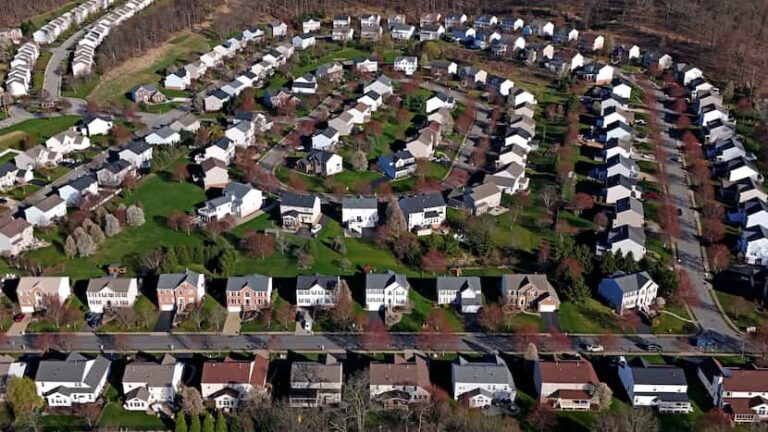Dallas-Fort Worth home prices rose 3.5% annually in February as the national market bucked the trend.
According to the latest S&P CoreLogic Case-Shiller Home Price NSA Index, this is lower than the national year-over-year increase of 6.4%. However, this is the largest annual increase in D-FW since January 2023, according to preliminary data on the closely watched housing measure.
Brian D. Luke, Head of Commodities, Real Assets and Digital Assets at S&P Dow Jones Indices He said the rate of increase would be the fastest annual rate since November 2022.
Dallas continued to report one of the lowest annual price increases among the 20 major metropolitan areas tracked by Case-Shiller. Only Denver (2.7%) and Portland (2.2%) reported smaller increases.
However, D-FW saw some of the nation's largest home price increases for most of 2021 and 2022, with year-over-year price increases of more than 10%.
Increases in the Northeast and West primarily drove the increase in February reports.
San Diego had the highest year-over-year increase among the 20 metro areas, rising 11.4% in February. Chicago and Detroit followed with an 8.9% increase. The Case-Shiller Index is a three-month moving average that compares changes in sales prices for specific properties over time.
“This is the second time that house prices have increased in the face of economic uncertainty, as the previous price peak was in 2022,” Luke said. “The first decline occurred after the start of the Federal Reserve's rate hike cycle. It was the second decline following the peak in average mortgage rates last October. Eagerness to lower prices appears to be supporting buyer behavior.”
On a monthly basis, D-FW home prices rose slightly in February, rising 0.6% from January. This is the first month-on-month increase since July 2023, based on historical price data that is not seasonally adjusted.
Eighteen of the 20 metros tracked by Case-Shiller reported monthly increases. In Tampa he reported a 0.3% decrease, while in Cleveland he saw no change.
“Like many economic indicators, the road to normalization for the housing market remains windy,” said Thelma Hepp, chief economist at CoreLogic. “While home sales and inventory have improved compared to last year's lows, rising mortgage rates continue to challenge affordability, leaving many potential buyers on the sidelines. Given the persistent imbalance between buyers and sellers, home price growth remains strong, with month-on-month growth even higher despite a slowdown in annual acceleration, which simply translates into 2023 This reflects a comparison with particularly strong growth in the spring of 2018.
Prices in Dallas have increased as well, but the annual increase has been “relatively subdued” given the “notable addition of new homes,” Hepp added.
For those looking to buy in D-FW this sales season, challenges may lie ahead.
Sales in North Texas were down 7% in March compared to the same month last year, according to data from Texas A&M University's Texas Real Estate Research Center, North Texas Real Estate Information Service and Metrotex Association of Realtors. The median home price in North Texas was $395,000 in March, up 1.3% from a year ago.
The Federal Reserve is also scheduled to meet this week to discuss next steps on interest rates, but a much-needed rate cut is threatened after a disappointing inflation report to start the year.
Mortgage interest rates exceeded 7% in April for the first time this year and continue to rise. The average 30-year mortgage rate for the week ending April 25th was 7.17%.

